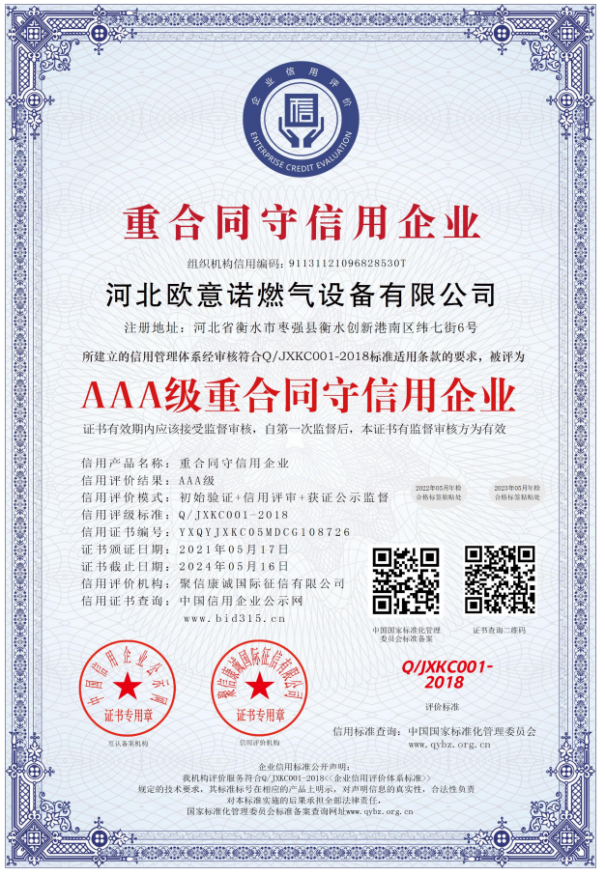
Nov . 10, 2024 04:01
Back to list
Pressure Relief Valve Functionality and Importance in Industrial Applications
Understanding Pressure Relief Valves The Unsung Heroes of Safety Engineering
In the realm of engineering and industrial safety, pressure relief valves (PRVs) play a critical role in ensuring the safe operation of various systems. Often overlooked, these devices serve as vital safety mechanisms designed to protect equipment and personnel from the devastating effects of overpressure scenarios. This article delves into the significance, functionality, and applications of pressure relief valves.
What is a Pressure Relief Valve?
A pressure relief valve is a device that automatically releases pressure from a system when it exceeds a predetermined level. This action helps to prevent potential catastrophic failures that could arise from excessive pressure build-up. PRVs are commonly used in a wide range of applications, including hydraulic systems, boilers, gas storage tanks, and chemical processing plants.
How Do Pressure Relief Valves Work?
The basic principle behind a pressure relief valve is simple yet effective. A spring-loaded mechanism keeps the valve closed under normal operating conditions, allowing the system to function properly. However, when the pressure within the system surpasses the set limit, the force exerted by the fluid against the valve seat overcomes the spring tension, prompting the valve to open. This release of pressure allows the system to return to a safe operating range.
Types of Pressure Relief Valves
There are several types of pressure relief valves, each designed for specific applications
1. Spring-Loaded Relief Valves These are the most common type of PRVs, utilizing a spring to maintain a certain pressure level. They are widely used in various industries due to their simplicity and reliability.
2. Pilot-Operated Relief Valves These valves utilize system pressure to help control the valve opening and closing. They are typically used in higher pressure applications and offer greater accuracy in pressure control.
.
4. Blow-off Valves Mostly used in pneumatic systems, these valves release excess air pressure effectively, preventing system failure.
صمام التنفيس

Importance of Pressure Relief Valves
The significance of pressure relief valves cannot be overstated. They are essential for several reasons
- Safety PRVs protect both equipment and personnel from the risks associated with overpressure. Uncontrolled pressure can lead to equipment failure, explosions, and severe injuries. - Regulatory Compliance Various industries are governed by strict safety regulations that mandate the installation and maintenance of pressure relief systems. Non-compliance can result in hefty fines and legal repercussions.
- Operational Efficiency By maintaining optimal pressure levels, PRVs contribute to the efficient operation of systems and reduce the risk of downtime caused by equipment failure.
Applications of Pressure Relief Valves
Pressure relief valves find applications in a multitude of industries
- Oil and Gas In oil refineries and gas pipelines, PRVs are critical for preventing overpressure situations that could lead to catastrophic failures.
- Chemical Manufacturing In chemical plants, where reactions can produce excessive pressure, PRVs safeguard against explosive situations.
- Food and Beverage In processes involving steam and pressure vessels, PRVs ensure the safety of food production equipment.
- HVAC Systems In heating, ventilation, and air conditioning systems, PRVs help maintain safe operating pressures.
Conclusion
Pressure relief valves may often be the unsung heroes of industrial safety, but their importance is undeniable. They protect against the dangers of overpressure, ensuring the safety of systems, equipment, and people. Understanding the functionality and significance of these devices is crucial for any industry that relies on pressurized systems. As technology advances, the design and efficiency of pressure relief valves continue to improve, enhancing safety standards across various sectors. Investing in proper PRV installation and maintenance is an essential step toward fostering a culture of safety and reliability in industrial operations.
Latest news
-
Safety Valve Spring-Loaded Design Overpressure ProtectionNewsJul.25,2025
-
Precision Voltage Regulator AC5 Accuracy Grade PerformanceNewsJul.25,2025
-
Natural Gas Pressure Regulating Skid Industrial Pipeline ApplicationsNewsJul.25,2025
-
Natural Gas Filter Stainless Steel Mesh Element DesignNewsJul.25,2025
-
Gas Pressure Regulator Valve Direct-Acting Spring-Loaded DesignNewsJul.25,2025
-
Decompression Equipment Multi-Stage Heat Exchange System DesignNewsJul.25,2025

